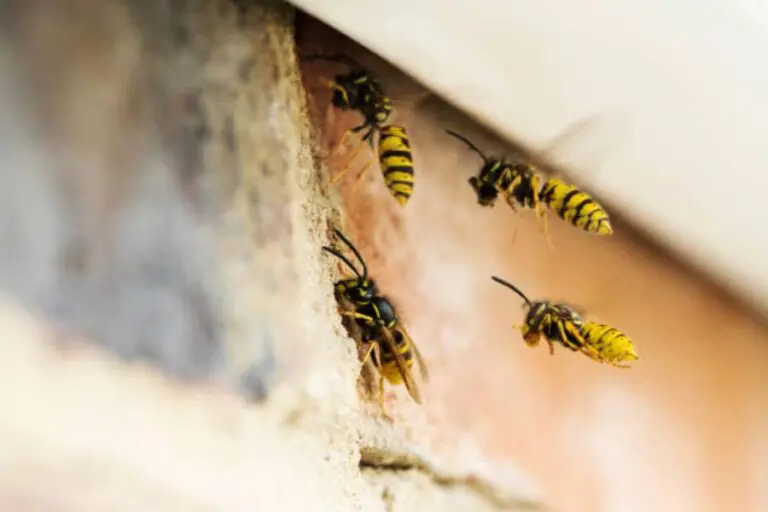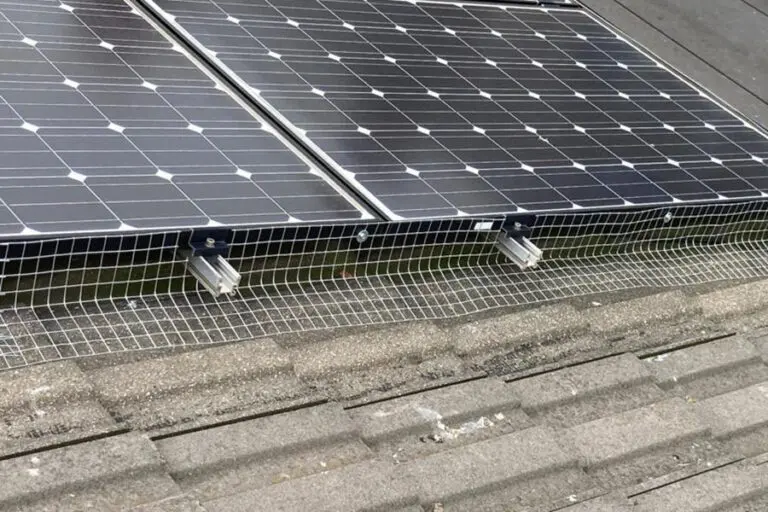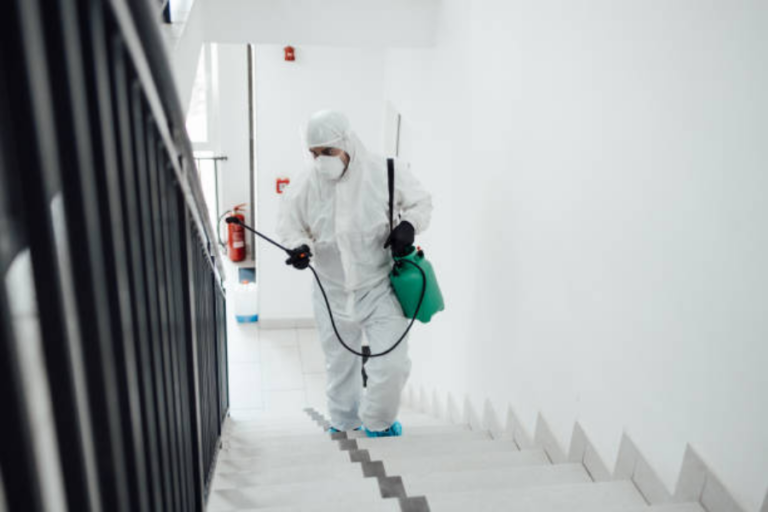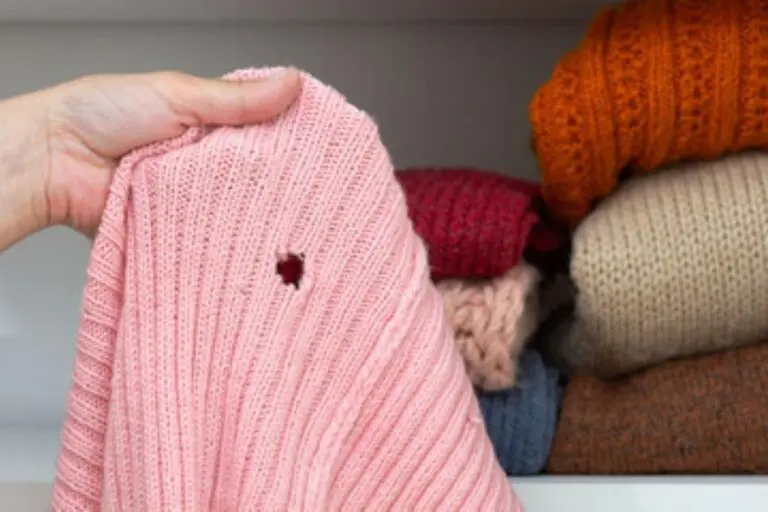Ultimate Guide to Clothes Moths: Prevention, Control, and Long-Term Solutions
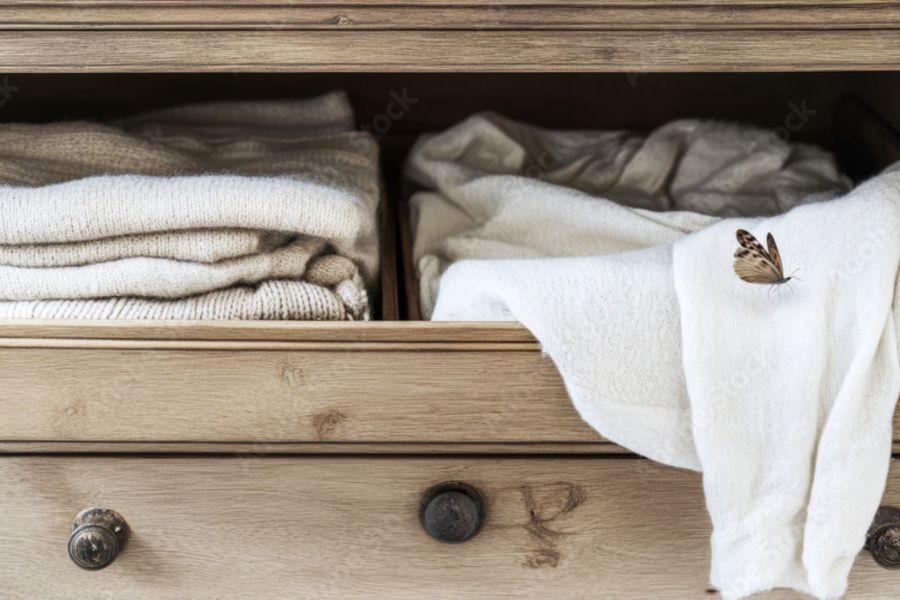
Clothes moths are one of the most common yet least understood household pests. They often lurk in the darkness of closets, storage spaces, or anywhere fabric is stored, especially items containing natural fibres like wool, silk, fur, and feathers. Left unchecked, clothes moths can cause extensive damage, gnawing through favourite sweaters, treasured heirlooms, and home furnishings. This guide explores everything you need to know about clothes moths, from understanding their lifecycle to recognising the signs of an infestation, implementing effective control measures, and ensuring long-term protection against future invasions.
Clothes Moths Explained: Why Are They Harmful?
Clothes moths are small but highly destructive pests, including species like the webbing clothes moth (Tineola bisselliella) and the case-bearing clothes moth (Tinea pellionella). They are drawn to natural fibres like wool, silk, and fur, where their larvae feed on keratin—a protein found in animal-based materials. It’s important to understand that while adult clothes moths don’t eat fabrics, they lay eggs on these materials. When the eggs hatch, the larvae begin feeding, leaving holes and trails of destruction behind. This damage can be particularly costly if it infests delicate or expensive textiles like cashmere sweaters, woollen rugs, or vintage clothing.
Identifying Clothes Moths in the Home
Identifying clothes moths before they cause significant damage is crucial. Here are the common signs to look for:
Appearance of Adult Clothes Moths: Clothes moths are generally pale gold or buff-coloured and measure about ½ inches in length. Unlike many other moths, they avoid light and prefer dark and secluded areas.
Larvae and Cases: Clothes moth larvae look like tiny, white caterpillars with brown heads. They cause fabric damage. Case-bearing clothes moth larvae often create small, tubular cases around themselves, which they drag along as they feed.
Presence of Silken Webbing: You may notice fine silk webbing or cases attached to the fabric. These are indicators of clothes moth larvae, which use silk to feed and move along the fibres.
Holes and Frass: The most common sign is small, irregular fabric holes, often accompanied by “frass,” the larvae’s excrement, which looks like small granules and is usually found near the damaged areas.
Damaged Fabrics: Clothes moths primarily target natural fibres. You may have an infestation if you notice wool, cashmere, feathers, or silk damage.
Regularly inspecting dark storage areas, closets, and wardrobes can help you catch an infestation early before it spreads.
Understanding the Lifecycle of Clothes Moths
Clothes moths’ lifecycle contributes to their ability to increase in a home. They undergo a four-stage lifecycle: egg, larva, pupa, and adult.
Egg Stage: A female clothes moth can lay 100–200 eggs over a few weeks. She chooses places rich in animal fibres and proteins as egg-laying sites, ensuring her offspring can access food upon hatching. Eggs hatch within 4-10 days, depending on conditions.
Larval Stage: The larval stage is the longest and most damaging, lasting up to several months. During this period, larvae feed on fabrics, causing the characteristic holes. They continue feeding until they have enough sustenance to reach the pupal stage.
Pupal Stage: After feeding, the larvae cocoon and pupate over several weeks. During this stage, they transform into adults.
Adult Stage: Adult clothes moths live for only a few weeks. Their primary purpose is reproduction. They do not eat during this stage but focus on laying eggs to ensure the continuation of the lifecycle.
Each lifecycle stage can vary depending on factors like temperature, humidity, and food availability, but generally, clothes moth populations grow fastest in warm, humid conditions.
Signs of Clothes Moth Infestation
An infestation can develop quickly if undetected, so it’s essential to recognise the indicators early:
Visible Damage to Fabrics: Clothes moths feed on natural fibres, leaving small, irregular holes in woollen sweaters, blankets, and similar items. Spotting these holes is often the first sign of an infestation.
Silken Tubes and Webbing: Clothes moth larvae spin silk as they feed, leaving web-like structures on fabrics. These can be found on or near affected clothing.
Frass and Shed Skins: Clothes moth larvae leave behind a trail of tiny, rice-like droppings (frass) near their infested areas. Additionally, as they grow, they shed their outer skins, which may also be found in storage areas.
Musty Odour: Some severe clothes moth infestations may produce a slightly musty or sour odour. This can be due to the build-up of frass and larvae skins.
Detecting these signs early can prevent significant losses in valuable clothing and textiles. Checking rarely-used items and periodically inspecting storage areas can help identify problems before they escalate.
Eco-Friendly and Non-Toxic Control Options for Clothes Moths
Essential Oils: Essential oils like lavender, cedar wood, and eucalyptus act as natural moth repellents. You can deter clothes moths by placing dried lavender or cedar chip sachets in closets and drawers. Alternatively, you can spray diluted essential oils in areas of concern.
Diatomaceous Earth: This natural powder, made from fossilised algae, is safe for humans and pets but lethal to clothes moths. Sprinkle diatomaceous earth around storage areas, baseboards, and closets to kill clothes moth larvae.
Freezing: Exposing affected items to extreme temperatures can kill clothes moth larvae. Place infested items in a sealed plastic bag and freeze them for 72 hours to ensure complete eradication.
Sun Exposure and Brushing: Clothes moths are sensitive to light. Taking clothing outside on sunny days, shaking it out, and brushing it vigorously can dislodge larvae and eggs. Direct sunlight and fresh air can disrupt the larvae’s feeding and inhibit their growth.
These non-toxic control methods can be as effective as chemical options without the associated health risks, making them ideal for households with children or pets.
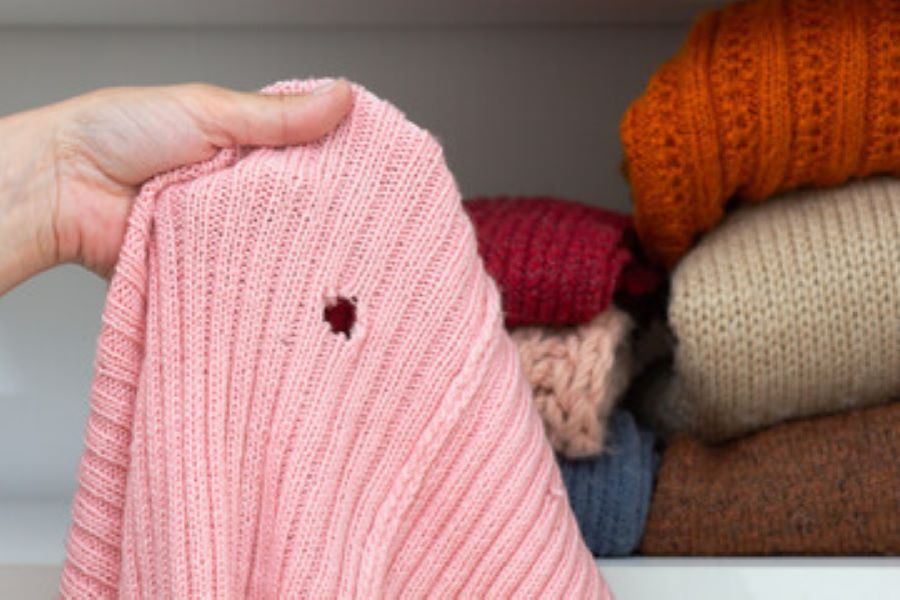
Preventing Clothes Moths with Long-Term Strategies
Preventing clothes moths requires a proactive approach. Here’s a list of long-term strategies that can help keep your home moth-free:
Regular Cleaning: Clothes moths thrive in undisturbed spaces. Regularly vacuum carpets, baseboards, and closets to remove eggs, larvae, and adult moths. Pay special attention to corners, drawers, and shelves where fabric items are stored.
Maintaining Low Humidity: Clothes moths thrive in warm, humid environments. Using a dehumidifier in closets and storage areas helps make conditions less favourable for their development.
Proper Storage Techniques: When storing clothing for extended periods, especially woollens, place them in airtight containers or vacuum-sealed bags to prevent moth access. Natural repellents like cedar blocks or sachets can be placed within containers for extra protection.
Regular Fabric Rotation: Periodically taking items out of storage and airing them disrupts clothes moths’ environments. Shaking or brushing garments reduces the likelihood of larvae taking hold.
Sealing Cracks and Entry Points: Clothes moths often enter homes through small cracks or vents. Sealing these entry points can help reduce the chance of infestation.
These preventive measures are essential to maintaining a moth-free home and safeguarding textiles for years.
Cleaning and Treating Clothes Moth Infestations
If you suspect or detect an infestation, prompt and thorough cleaning is crucial:
Vacuuming: Start by vacuuming closets, drawers, and storage spaces where moths are detected. Remove all infested items and vacuum floors, corners, and shelves. Dispose of the vacuum bag immediately to prevent re-infestation.
Laundering and Dry Cleaning: Wash clothes at the hottest temperature possible for each fabric. Delicate items may require dry cleaning, which kills clothes moth larvae without damaging the material.
Freezing Treatment: For delicate fabrics, freeze them in plastic bags for at least 72 hours. This is particularly useful for items that cannot be laundered or dry-cleaned.
Steam Cleaning: Steam cleaning carpets and upholstery can kill clothes moth larvae. The heat penetrates fibres deeply, eliminating larvae and eggs.
Chemical Sprays and Insecticides: In extreme cases, insecticide sprays may be necessary. However, these should be used sparingly and cautiously, ideally in conjunction with non-toxic methods. Always follow product instructions and avoid using sprays directly on clothing.
Thorough cleaning, storage, and preventive measures can help restore a home free of clothes moths and their damage.
Storing Clothes and Fabrics to Avoid Clothes Moths
Proper storage of fabrics and clothing is one of the best ways to prevent clothes moths:
Airtight Containers: Store off-season clothing in airtight containers to prevent clothes moths from accessing these items. Vacuum-sealed bags are also effective for longer-term storage.
Use Cedar and Lavender: Cedar blocks, chips, and lavender sachets act as natural moth repellents. Please place them in closets and drawers to keep clothes moths at bay.
Avoid Storing Unwashed Clothing: Clothes moths are attracted to body oils, sweat, and food stains. Wash items thoroughly before storing them to eliminate attractants.
Periodic Inspection: Regularly inspect stored items to catch signs of clothes moth activity early. This proactive approach can prevent a full-blown infestation and minimise potential damage.
When to Call Professional Pest Control for Clothes Moths
Professional pest control may be necessary in severe cases or when dealing with high-value items like heirlooms. A professional can assess the situation, identify species, and employ advanced methods to remove clothes moths entirely. Professionals may use heat treatments, fumigation, or residual insecticides to target clothes moths in hard-to-reach areas.
Managing clothes moths requires vigilance, routine cleaning, and proper storage techniques. By staying proactive and recognising early signs, you can keep clothes moths from causing irreversible damage to your fabrics. Implementing non-toxic options like essential oils, regular cleaning, and secure storage provides adequate, long-term protection for your garments and linens. A multi-faceted approach, incorporating preventive measures and responsive actions, will help keep clothes moths under control, allowing you to enjoy a moth-free home.


